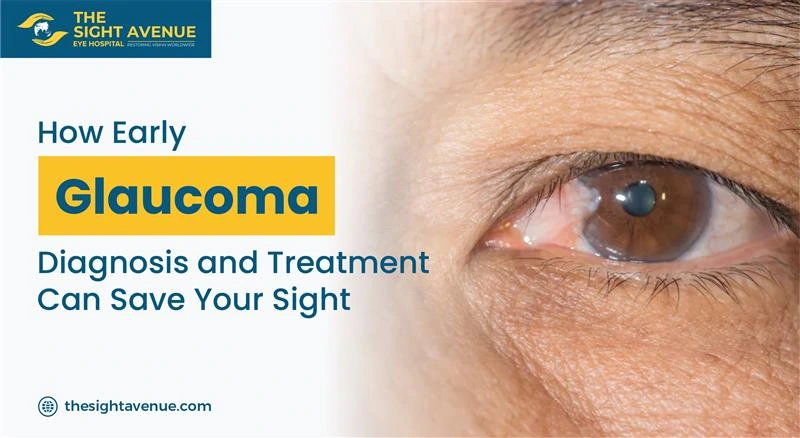Types of Cataracts and Their Surgeries – What You Should Know

Cataracts are a common eye problem that affects a lot of people all over the world. As we age, the natural lens inside our eyes becomes progressively cloudy, leading to blurred vision and other visual impairments. Fortunately, advances in medical technology have made Cataract Surgery in Gurgaon a safe and effective method for restoring clear vision. In this blog, we will explore the different types of Cataract and the surgical options available to treat them.
Types of Cataracts

1. Age-Related Cataract:
Age-related cataracts are the most prevalent type of cataract and occur as a person ages naturally. Over time, proteins in the lens start to clump together, forming cloudy areas that interfere with vision. Symptoms may include blurry vision, difficulty seeing in low-light conditions, and increased sensitivity to glare
2. Congenital Cataract:
Congenital cataracts are present at birth or may develop during early childhood. They can occur due to genetic factors, infections during pregnancy (such as rubella), metabolic disorders, or trauma. Prompt diagnosis and treatment are essential to prevent long-term vision problems in children.
3. Traumatic Cataract:
Traumatic cataracts are caused by an injury or trauma to the eye. They can occur immediately after the injury or develop gradually over time. Common causes include direct blows to the eye, penetration of foreign objects, or exposure to intense heat or radiation. Immediate medical care is required to prevent further complications.
4. Secondary Cataract:
Secondary cataracts may develop as a result of other eye conditions or medical treatments. They can occur after eye surgery, such as for glaucoma or retinal detachment, or due to certain systemic diseases like diabetes. Long-term use of some medicines, like corticosteroids, can also cause secondary cataracts to form.
Major Types of Cataract Surgery
Commonly, Cataract Surgery is performed to remove the clouded lens and replace it with an intraocular lens (IOL). It is usually an outpatient procedure and typically takes less than 30 minutes to complete. The two primary types of cataract surgery are:
- Phacoemulsification: Phacoemulsification, or phaco, is the most commonly used technique for cataract removal. It involves making a small incision in the cornea and using ultrasound waves to break up the cloudy lens into tiny fragments. These fragments are then gently suctioned out of the eye. Once the natural lens is removed, the surgeon inserts the IOL through the same incision. Phacoemulsification is known for its quick recovery time and minimal postoperative discomfort.
- Extracapsular Cataract Extraction (ECCE): ECCE is an older technique that involves creating a larger incision to remove the entire cloudy lens in one piece. This method is typically used for more advanced cataracts or in cases where phacoemulsification is not feasible. After the cloudy lens is removed, the IOL is placed in the eye, and the incision is closed with stitches. ECCE generally requires a longer recovery period compared to phacoemulsification.
Advancements in Cataract Surgery
In recent years, cataract surgery techniques and technology have seen significant advancements, leading to improved outcomes and patient satisfaction. Some notable advancements include:
- Femtosecond Laser-Assisted Cataract Surgery (FLACS): FLACS is an advanced technique that uses a laser to perform key steps of cataract surgery. It provides more precise incisions, capsule openings, and fragmentation of the lens, resulting in increased accuracy and potentially better visual outcomes.
- Premium Intraocular Lenses: Traditional IOLs used in cataract surgery are monofocal, meaning they provide clear vision at a single fixed distance. However, premium IOLs, such as multifocal or accommodating lenses, can provide a range of vision, reducing the need for glasses or contact lenses after surgery. These advanced lenses offer improved vision at both near and distance vision, providing greater independence from corrective eyewear.
- Minimally Invasive Cataract Surgery: Minimally Invasive Techniques, such as Microincision Cataract Surgery (MICS) and Small-Incision Cataract Surgery (SICS), have gained popularity due to their smaller incisions and faster recovery times. These techniques reduce induced astigmatism and promote quicker visual rehabilitation. Our MICS cataract surgery is the most affordable and efficient.
What cataract surgery is the safest for you?
In the end, it will depend on your specific situation. Before making a decision, discuss the risks and benefits of each procedure with your physician and ask pertinent questions. With appropriate care and attention, cataract surgery can improve vision and quality of life.
Finally, keep in mind that prevention is always better than cure; routine eye exams are crucial for identifying potentially sight-threatening conditions early on so that they can be effectively treated. Taking these preventative measures now could save you a substantial amount of time, energy, and money in the future.
Regular eye exams are the foundation of good eye health Schedule an appointment with an ophthalmologist today. If you have already been diagnosed with cataracts, speak with your doctor about the optimal surgical treatment for you. Cataract surgery can restore your vision and enhance your quality of life if performed with the necessary care and attention.
Conclusion
Certainly, it is really a big problem to wear glasses every day, and only those people can understand what they are facing in their day-to-day life. These glasses have many problems like dust often sticking on them, forgetting or misplaced problems, it is not suitable with your outfit, and most importantly, it causes discomfort when you need to carry these spectacles on your nose daily. If you are also facing similar kinds of problems, then you may consult with any professional to get rid of spectacles.
Take the first step towards a clearer, more comfortable life—consult the experts at The Sight Avenue Hospital – Best Eye Hospital in Gurgaon. Your vision deserves the best!
Eye problems? Searching for an eye specialist near me in Delhi NCR? The Sight Avenue has 5 eye clinics in Delhi NCR. Contact us today!
Eye Hospital in Delhi
- The Sight Avenue
- The Sight Avenue
- The Sight Avenue
E-82-A, Ground Floor, Hansraj Gupta Rd, Greater Kailash I, New Delhi, Delhi 110048
Email:enquiry@thesightavenue.com
Tel : 011-4666 0666
Mob : +91-8883330799
Fortis Hospital, Escorts Okhla, New Delhi
Fortis Hospital, Vasant Kunj, New Delhi
Recent Post





